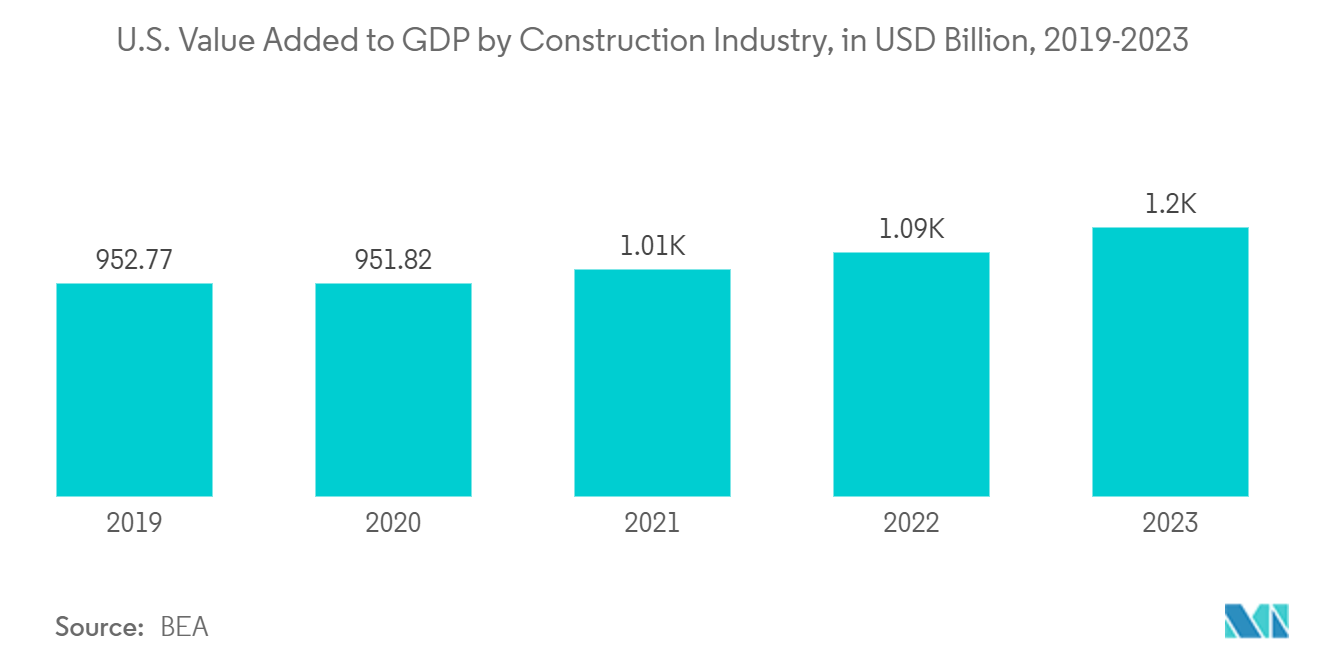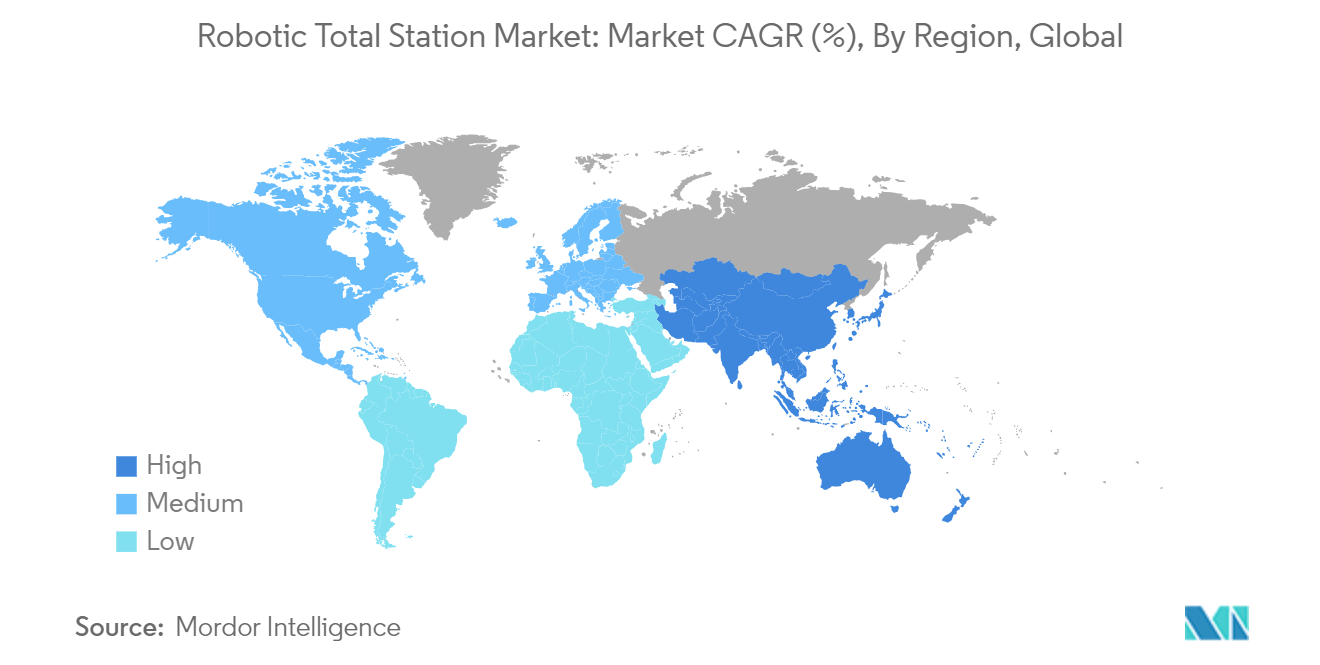Market Trends of Robotic Total Stations Industry
Construction Industry Expected To Hold Significant Demand
- Global growth in the construction industry is a primary driver for the market's expansion. According to Construction Today, the US construction sector has seen a notable uptick since 2021, coinciding with a broader economic and industrial upswing. By 2023, the construction sector contributed approximately USD 1.2 trillion to the nation's GDP, up from USD 1.09 trillion the year prior.
- During this period, a multitude of construction projects, each surpassing the billion-dollar threshold, collectively amassed a valuation of an impressive USD 500 billion. These ventures span diverse sectors, from semiconductor manufacturing and battery production to electric vehicle facilities and advancements in environmental technology.
- Looking forward, the construction sector's momentum appears steadfast. Projections suggest that by 2030, the United States might be disbursing contracts worth an astounding USD 60 billion annually to plant manufacturers. This forecast underscores a temporary uptick and hints at a prolonged growth trajectory. Such an influx of projects promises to inject billions into the market, fortifying the construction industry's dynamism.
- Today's building structures are increasingly intricate, demanding cost-effectiveness, swift turnarounds, and top-notch quality. Meeting these demands necessitates embracing modern processes, including advanced equipment, building information modeling solutions, and digital workflows. Consequently, the use of robotic total stations (RTS) has surged as they streamline the construction layout process, enhancing productivity and accuracy.
- Infrastructure construction projects are witnessing a notable uptick. For example, in Q2 2024, Europe unveiled five major road infrastructure projects, such as the R4WO Road Redevelopment and the E45 Vejle-Skanderborg Road Expansion.
- In June 2024, a wave of multimillion-dollar construction projects was set to kick off in the United States. Five of these, predominantly in Texas, are part of a USD 1.2 billion package awarded to the Houston-based Webber construction firm, a subsidiary of the European infrastructure giant Ferrovial.
- By continuously monitoring various parameters during construction, robotic total stations are pivotal. They offer real-time insights into site conditions, project progress, and construction accuracy. This ensures that buildings, roads, and other structures adhere to design specifications and safety standards, underscoring their significance in the industry.

Asia-Pacific Expected to Rise at a Significant Rate
- In the Asia-Pacific, the urgency for significant infrastructure development is escalating. Urbanization, population growth, and economic expansion are driving the swift demand for new and upgraded infrastructure. The Asian Development Bank (ADB) projects that to sustain economic growth, combat poverty, and address climate risks, Asia must invest around USD 1.7 trillion annually in infrastructure through 2030. This figure is more than double the investment levels ADB recommended back in 2009. Given this pressing need for infrastructure, several nations in the Asia-Pacific are channeling substantial investments into projects, anticipating a boost in market growth.
- Renowned as one of the world's most mineral-rich regions, the Asia-Pacific boasts diverse mineral resources due to its unique geographical conditions. Nations across the region are abundant in resources like coal, iron, petroleum, and manganese. Forbes reported that in 2023, global coal production hit a record 179 exajoules (EJ), eclipsing the previous year's figures.
- The Asia-Pacific was responsible for nearly 80% of this global output, with Australia, China, India, and Indonesia leading the charge, collectively contributing to 97% of the region's production. Remarkably, China alone accounted for just over half of the world's coal output. The surge in mining activities across the region is facilitating the adoption of total station devices, which are crucial for precise measurements in coal mining tunnels.
- According to the OECD-FAO Agricultural Outlook 2021-2030, the Asia-Pacific stands as the largest net importer of primary agricultural commodities, making up over 30% of global imports. With a rising population driving food demand, the region is increasingly embracing precision agriculture, further bolstering the market's growth prospects.


